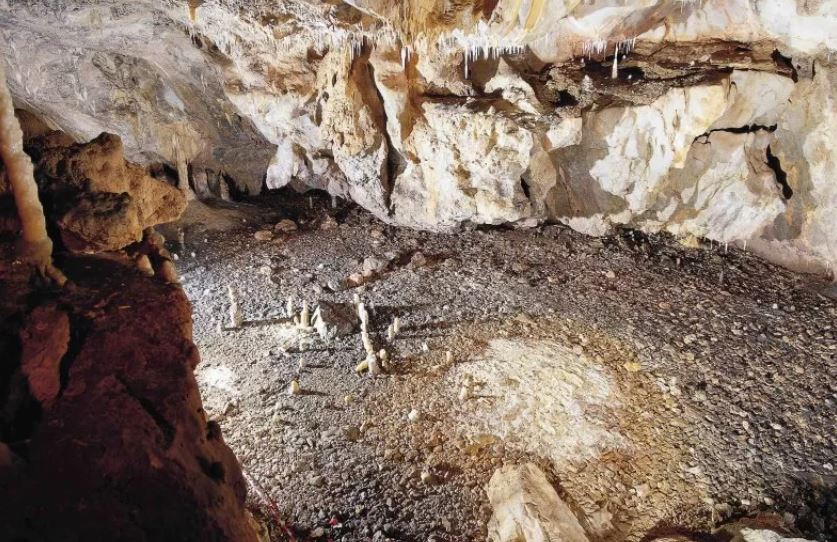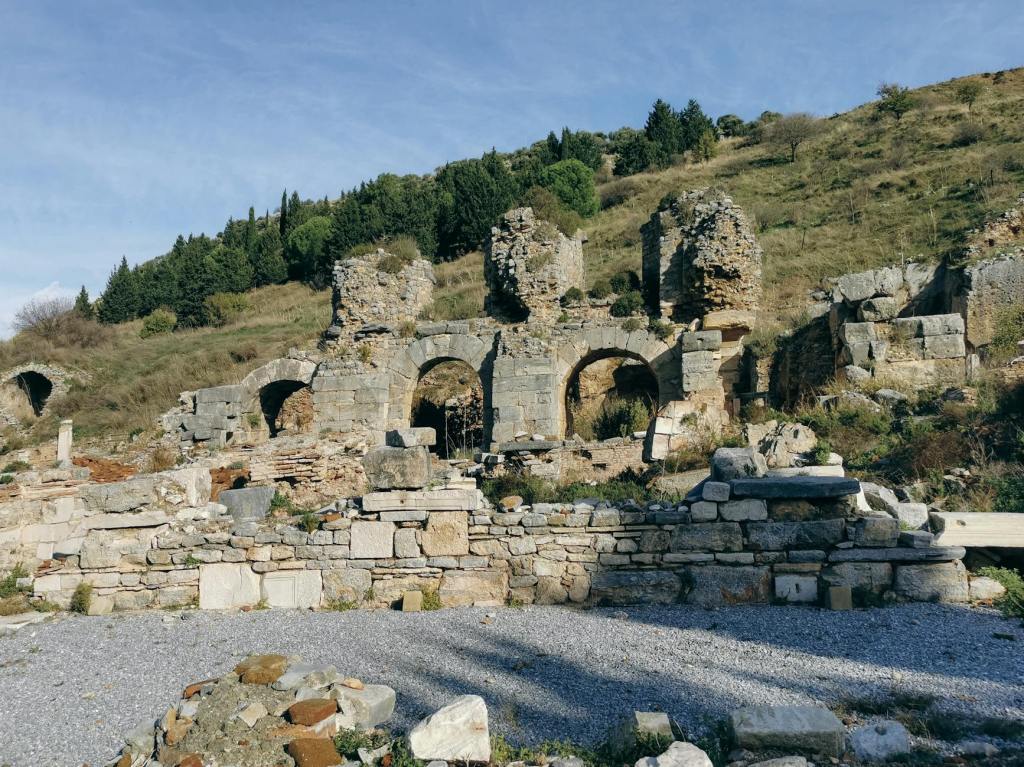Introduction
Embarking on a journey through the annals of archaeology and anthropology, I present my recent exploration into the mysteries of our past and the complexities of human existence. In a world where knowledge is often compartmentalized, I advocate for a polymathic approach to learning, one that transcends disciplinary boundaries to embrace the interconnectedness of all things. Join me as we delve into diverse realms of study, weaving together threads of insight to unravel the grand tapestry of humanity, the cosmos, and the divine. Below, you’ll find a curated collection of readings and viewings, accompanied by my reflections, inviting you to embark on a multidimensional voyage of discovery alongside me.
Unearthing the Past: A Glimpse into Prehistoric Life
- Archaeologists Find 16,800-Year-Old Cave Dwelling That Is ‘One of the Best’ Story by Aristos Georgiou (Newsweek)
The recent discovery of a 16,800-year-old cave dwelling stands as a testament to the resilience and ingenuity of ancient civilizations. Dubbed “one of the best preserved Paleolithic dwellings” by the Government of Cantabria, this find offers a rare glimpse into life during the Old Stone Age.
“Paleolithic dwelling structures are extremely rare, and they are even more exceptional inside a cave,” remarks Pablo Arias, a professor of prehistoric archaeology at the University of Cantabria, involved in the discovery. The caves at La Garma, where the dwelling was found, reveal five levels of human activity spanning over 300,000 years, providing a comprehensive record of ancient habitation.

PROYECTO LA GARMA/GOBIERNO DE CANTABRIA
The cave’s Lower Gallery, sealed off by a landslide around 16,000 years ago, has preserved the ancient remains within like a prehistoric time capsule. This remarkable preservation offers archaeologists a unique opportunity to piece together the puzzle of prehistoric life, shedding light on the daily activities and rituals of our ancient ancestors.
For scholars and enthusiasts alike, each discovery from the Paleolithic era adds another layer to our understanding of human history. Yet, these findings also pose intriguing questions for interpretations of religious texts. The evidence challenges the beliefs of young Earth creationists, while prompting reflection among old Earth Christians on the intersection of archaeological discoveries with biblical narratives. As we navigate the complexities of our shared past, these ancient artifacts serve as both windows into history and catalysts for contemplation on the origins of humanity.
Unraveling the Truth: Retraction of a Controversial Study on a 25,000-Year-Old Pyramid
In a striking turn of events, the journal Archaeological Prospection has retracted a contentious study claiming the construction of a pyramid in Indonesia dating back 25,000 years. The retraction comes amidst fervent debate within the archaeological community regarding the validity of the study’s findings.
Lutfi Yondri, an archaeologist at BRIN in Bandung, Indonesia, has challenged the study’s assertions, presenting evidence that contradicts the notion of a pyramid construction during the proposed timeframe. Yondri’s research indicates that inhabitants of the region occupied caves between 12,000 and 6,000 years ago, devoid of the advanced masonry capabilities attributed to earlier civilizations.
Flint Dibble, an archaeologist at Cardiff University, UK, has echoed Yondri’s skepticism, highlighting flaws in the study’s methodology and conclusions. While acknowledging the use of legitimate data, Dibble contends that the study’s interpretations were unsubstantiated, particularly regarding the carbon dating of organic soils purportedly indicating construction stages dating back to the Paleolithic era.
The retraction of the study has sparked controversy, with the authors denouncing the decision as unjust. They maintain that the structures identified are unequivocally of anthropogenic origin, backed by tangible evidence of human activity. However, the scientific community stands firm in its commitment to rigorous scrutiny and academic integrity, viewing retractions as essential safeguards against the dissemination of false information.
Yet, amidst discussions of scientific vetting, divergent perspectives emerge. Some may perceive retractions as necessary corrections to prevent the spread of inaccuracies, while others may interpret them as orchestrated attempts to suppress dissenting viewpoints. The debate underscores the complex interplay between scientific inquiry and human interpretation, inviting reflection on the nature of truth and the pursuit of knowledge.
In navigating this discourse, we are challenged to confront the nuances of scientific discovery, grappling with questions of evidence, interpretation, and the quest for truth. Ultimately, whether perceived as safeguards against misinformation or as tools of suppression, retractions serve as reminders of the ever-evolving nature of scientific inquiry and the ongoing pursuit of knowledge.
What do you think false information or conspiracy to coverup?
Unveiling Lost Treasures: Rediscovering Ancient Cyprus
- Bronze Age to Byzantine: Scientists Uncover 46 Archaeological Sites Thought To Be Lost to History – Cyprus
In a remarkable archaeological endeavor, scientists have unearthed 46 previously unknown sites in Cyprus, shedding light on epochs of history believed lost to the annals of time. While the precise dating of these sites remains elusive, they are believed to span from the Bronze Age to the Byzantine period, encompassing millennia of human civilization.
The significance of these discoveries is profound, offering a tantalizing glimpse into the rich tapestry of Cypriot history. From the Hellenistic and Roman periods to the enigmatic Minoan civilization, these sites hold the potential to unravel longstanding mysteries and reshape our understanding of ancient cultures.
Did the Minoan civilization make it’s way to Cyprus? Of particular interest to me is the potential presence of Minoan artifacts among the newly uncovered sites or at least the people contemporaneous with the Minoans. The Minoan civilization, one of the earliest in Europe, has long captivated scholars and enthusiasts alike with its sophisticated art, architecture, and maritime prowess. Yet, the fate of the Minoans remains shrouded in conjecture, with theories ranging from natural disasters to mythical origins. As researchers delve deeper into the newly discovered sites in Cyprus, the hope remains that these excavations will yield insights into the enigmatic Minoans and their enduring legacy.
Unraveling Ancient Seafaring: Neolithic Boats in the Mediterranean
- Neolithic boats excavated in the Mediterranean reveal advanced nautical technology by Public Library of Science
A recent study unveils the astonishing maritime prowess of ancient civilizations in the Mediterranean, dating back over 7,000 years. Published in PLOS ONE by Juan F. Gibaja and colleagues, the research sheds light on the technologically advanced boats utilized by Neolithic communities, offering fresh insights into ancient seafaring practices.
The Mediterranean Sea has long been a cradle of civilization, nurturing some of Europe’s most influential cultures. During the Neolithic period, evidence suggests that communities traversed these waters, engaging in trade and exploration. At the heart of this maritime activity lies the village of La Marmotta, nestled along the shores of Rome, Italy, where archaeologists have unearthed remarkable remnants of ancient watercraft.
The discovery of these Neolithic canoes speaks volumes about the ingenuity and resourcefulness of our ancestors. Crafted with precision and skill, these boats represent a testament to the sophisticated nautical technology of their time. Through meticulous analysis, researchers aim to unravel the secrets of these ancient vessels, piecing together clues about their construction, navigation, and utilization.
Indeed, the revelation of advanced seafaring capabilities challenges conventional perceptions of prehistoric societies. As we marvel at the ingenuity of these ancient mariners, questions emerge about the landscape they navigated. What were the coastlines like when these boats plied the Mediterranean waters? How did environmental factors shape their maritime endeavors?
In pondering these mysteries, we are reminded of the enduring legacy of ancient civilizations and the boundless depths of human innovation. As researchers continue to unearth relics of our past, each discovery offers a glimpse into the intricate tapestry of history, inspiring awe and admiration for the ingenuity of our forebears.
Unraveling the Enigma of Neanderthal Art: Insights from La Roche-Cotard
- These Prehistoric Paintings Are 57,000 Years Old — But Who Painted Them? Story by Sam Walters https://www.discovermagazine.com/the-sciences/these-prehistoric-paintings-are-57-000-years-old-but-who-painted-them
- The earliest unambiguous Neanderthal engravings on cave walls: La Roche-Cotard, Loire Valley, France, PLOS ONE Published: June 21, 2023 https://doi.org/10.1371/journal.pone.0286568
In a groundbreaking study published in PLOS ONE, researchers delve into the mysteries of prehistoric art, shedding light on the enigmatic origins of ancient cave paintings. Nestled within the Loire Valley of France, the cave of La Roche-Cotard has emerged as a pivotal site, offering tantalizing glimpses into the artistic endeavors of our Neanderthal cousins.
The quest to discern the creators of these ancient masterpieces has long perplexed paleoarchaeologists and paleoanthropologists. While distinguishing between human and non-human markings is often straightforward, attributing specific works to a particular species has proven more elusive. However, recent findings present a compelling case for Neanderthal authorship, marking a significant milestone in our understanding of their cognitive abilities and cultural practices.
The significance of these Neanderthal engravings lies not only in their antiquity, dating back a staggering 57,000 years, but also in their intricate patterns and deliberate arrangements. Unlike earlier examples of Neanderthal graphic evidence found on portable objects, the markings at La Roche-Cotard exhibit a level of complexity and organization suggestive of deliberate artistic expression.
Yet, the nature of these ancient artworks remains a source of fascination and speculation. Admittedly rudimentary in execution, they lack the representational detail commonly associated with later human cave art. Instead, they evoke a sense of abstract expressionism, prompting intriguing questions about the motivations and intentions of their creators.

© 2023 Marquet et al. This is an open access article distributed under the terms of the Creative Commons Attribution License
I find myself puzzled by the engravings. They appear quite basic, yet indicative of deliberate human action. Interestingly, they somewhat resemble patterns that might result from insects eating away at partially buried paper. Moreover, I can’t help but jest that image 34 on Fig 10, The Linear Panel, bears a striking resemblance to a ghost!
In contemplating the meaning behind these ancient engravings, one cannot help but marvel at the cognitive capabilities of our Neanderthal ancestors. Were these markings simply the result of idle doodling, or did they hold deeper symbolic significance lost to the mists of time? As we unravel the mysteries of Neanderthal artistry, we are reminded of the enduring quest to decipher the complexities of our shared human heritage.
Unveiling Biblical Treasures: Top Archaeological Finds of 2023
- Top 10 Biblical Archaeology Finds of 2023, Armstrong Institute of Biblical Archaeology.
In a captivating discourse hosted by the Armstrong Institute of Biblical Archaeology, Brent Nagtegaal and Armstrong Institute archaeologist Christopher Eames embark on an illuminating journey through the top ten biblical archaeology discoveries of 2023.
Delving into the rich tapestry of the Levant during the era of King David and King Solomon, the discussion unveils a plethora of remarkable findings that directly correlate with biblical narratives. From ancient artifacts to architectural remnants, each discovery serves as a tangible link to the storied past chronicled in the Bible.
Moreover, these archaeological revelations offer compelling evidence countering narratives propagated by Islamic extremists, refuting claims of Israel’s nonexistence in the Middle East. Furthermore, they provide substantial support for the historicity of the Old Testament, addressing skepticism surrounding its authenticity.
As Nagtegaal and Eames meticulously unravel the significance of each find, their discourse not only illuminates the profound historical connections embedded in the Levant’s soil but also underscores the enduring relevance of biblical archaeology in unraveling the mysteries of antiquity.
Conclusion
In navigating the labyrinth of archaeological discovery, I am reminded of the inexhaustible curiosity that drives humanity’s quest for knowledge. Each excavation, each artifact, serves as a testament to our shared heritage and the enduring quest to unlock the secrets of our past. As we piece together the fragments of history, let us embrace the journey with wonder and humility, for it is in the pursuit of knowledge that we uncover the true marvels of the human story.


Leave a comment